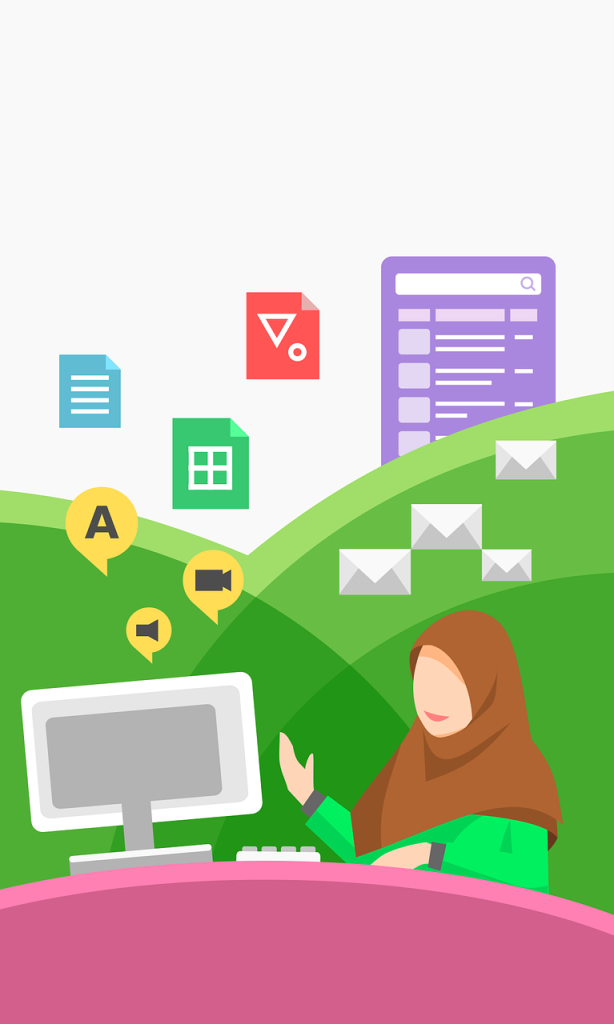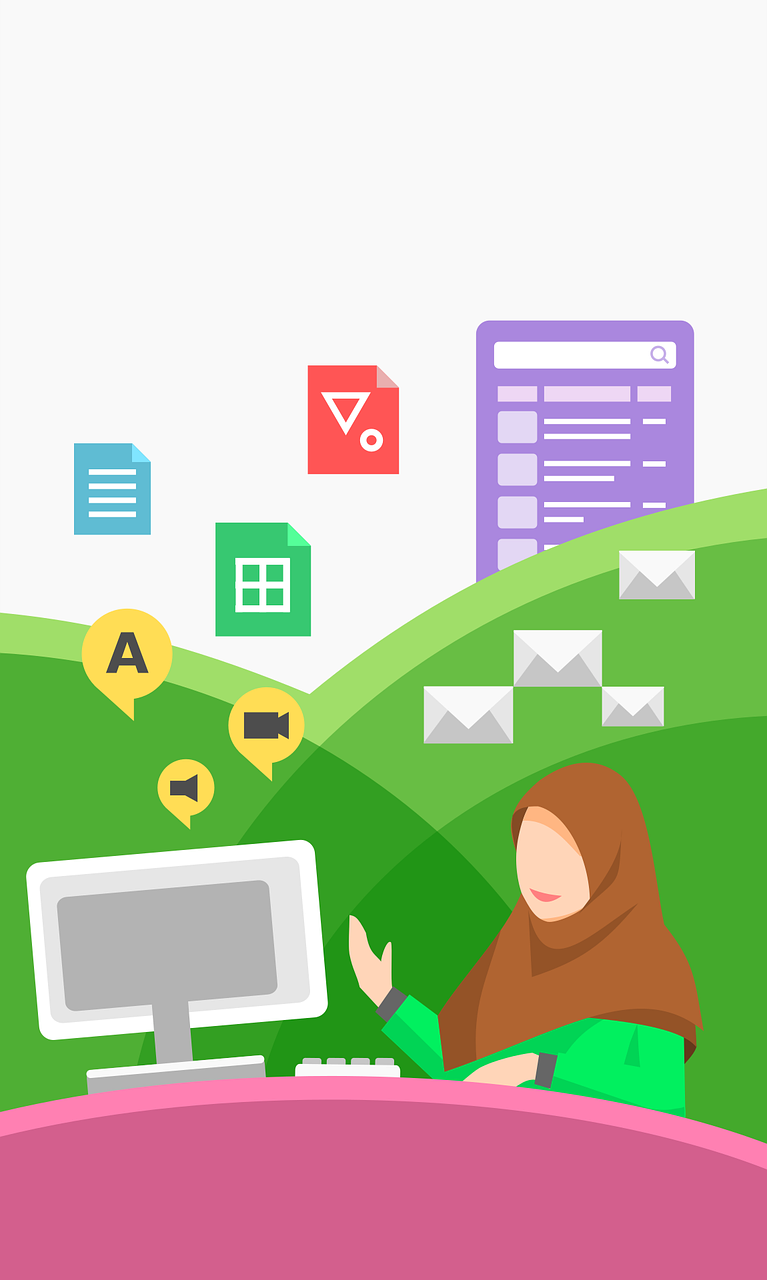So you’ve heard about SaaS, but you’re not quite sure if it’s the right fit for your business. Well, look no further, because in this article, we’re going to explore the key factors that indicate whether your business needs Software as a Service (SaaS) or not. From streamlining operations to reducing costs, we’ll uncover the benefits that SaaS can bring to your organization, as well as the industries that are best suited for this cloud-based software solution. If you’re ready to take your business to the next level, keep reading to find out if SaaS is the missing piece in your puzzle. Businesses of all sizes and across various industries can benefit from using Software as a Service (SaaS) solutions. SaaS offers numerous advantages, such as cost savings, scalability, accessibility, quick deployment, automatic updates, data security, flexibility, collaboration, customization, and integration. It supports common business functions like customer relationship management, human resources management, accounting and finance, project management, supply chain management, sales and marketing, communication and collaboration, data analysis and business intelligence, document management, and e-commerce. When choosing a SaaS provider, factors to consider include reliability and uptime, scalability and customization, data security and privacy, integration capabilities, pricing and licensing, support and customer service, performance monitoring and reporting, compliance and regulations, backup and disaster recovery, and a user-friendly interface. Some popular SaaS solutions for businesses include Salesforce, Zoom, Shopify, QuickBooks Online, Trello, Slack, Google Workspace, Microsoft 365, Zoho CRM, and Adobe Creative Cloud. However, businesses should also be aware of the challenges and considerations involved in adopting SaaS, such as bandwidth and connectivity, data migration and integration, vendor lock-in, training and user adoption, data ownership, regulatory compliance, system compatibility, hidden costs, service level agreements, and exit strategies. Moreover, there are common mistakes to avoid when implementing SaaS, such as not conducting adequate research, neglecting data security, underestimating user training, overlooking integration requirements, over-reliance on a single provider, failing to consider scalability, ignoring service level agreements and contract terms, failure to plan for disaster recovery, lack of data backup, and disregarding usability and user experience. Looking towards the future, the adoption of SaaS by businesses is expected to bring advancements in AI and machine learning integration, increased cloud adoption, enhancements in security and privacy, industry-specific solutions, a mobile-first approach, virtual and augmented reality applications, collaboration and communication improvements, enhanced data analysis and insights, automation and streamlining of processes, and integration with the Internet of Things (IoT).
Industries that Benefit from SaaS:

This image is property of pixabay.com.
A. Software Development
Software development companies greatly benefit from SaaS solutions, as they provide the necessary tools and platforms for developers to collaborate, code, and deploy applications. SaaS reduces the need for companies to build and maintain their own infrastructure, allowing them to focus on developing high-quality software.
B. Healthcare
The healthcare industry relies heavily on technology to streamline processes, manage patient data, and provide efficient care. SaaS solutions in healthcare enable medical practitioners to access patient records, schedule appointments, and communicate with colleagues seamlessly. This improves patient care and increases operational efficiency.
C. Retail
Retail businesses can effectively utilize SaaS solutions for inventory management, point-of-sale systems, e-commerce platforms, and customer relationship management. SaaS solutions help retailers streamline operations, improve customer experience, and gain insights into consumer behavior, ultimately driving sales and profitability.
D. Finance
SaaS is particularly beneficial for the finance industry, as it offers secure and efficient solutions for accounting, financial planning, budgeting, and risk management. Financial institutions can leverage SaaS for real-time data analysis, compliance reporting, and managing complex financial processes.
E. Education
Educational institutions can leverage SaaS solutions for various purposes, including learning management systems, student information systems, virtual classrooms, and online content creation. SaaS in education provides educators and students with flexible, accessible, and collaborative platforms, enhancing the overall learning experience.
F. Hospitality
The hospitality industry benefits from SaaS solutions for managing reservations, property management, customer service, and loyalty programs. SaaS enables hotels, restaurants, and other hospitality establishments to improve operational efficiency, enhance guest experiences, and optimize revenue management.
G. Telecommunication
Telecommunication companies rely on SaaS for customer relationship management, billing systems, call center management, and network monitoring. SaaS solutions allow telecom providers to scale their operations, streamline processes, and offer personalized services to customers.
H. Manufacturing
Manufacturing companies can leverage SaaS for supply chain management, inventory control, production planning, and quality control. SaaS solutions enable manufacturers to streamline operations, collaborate with suppliers, and optimize production processes, leading to cost savings and improved efficiency.
I. Real Estate
SaaS solutions benefit the real estate industry by providing tools for property management, sales and marketing, lease management, and client relationship management. Real estate professionals can leverage SaaS to streamline workflows, track leads, manage transactions, and offer personalized experiences to clients.
J. Transportation
The transportation industry can leverage SaaS solutions for logistics management, fleet tracking, route optimization, and passenger management. SaaS enables transportation companies to improve efficiency, reduce costs, and enhance customer satisfaction by providing real-time information and seamless communication.
Advantages of SaaS for Businesses:
A. Cost Savings
SaaS eliminates the need for businesses to invest in expensive hardware and software infrastructure, reducing upfront costs. Additionally, businesses can save on ongoing maintenance and support expenses, as the SaaS provider handles these aspects.
B. Scalability
SaaS solutions offer scalability, allowing businesses to easily adjust their usage based on their needs. Businesses can quickly scale up or down without having to invest in additional resources, making it a cost-effective option for growing enterprises.
C. Accessibility
With SaaS, businesses can access their applications and data from anywhere, as long as they have an internet connection. This allows for remote work, collaboration, and improved productivity, as employees can work from any location or device.
D. Quick Deployment
SaaS solutions are typically ready to use once the subscription is set up, allowing businesses to quickly deploy and start using the software. This saves time and resources that would otherwise be spent on implementing and configuring on-premise software.
E. Automatic Updates
SaaS providers take care of software updates and maintenance, ensuring that businesses always have access to the latest features and security enhancements. This eliminates the need for businesses to manually install updates and ensures that they are using the most up-to-date version of the software.
F. Data Security
SaaS providers prioritize data security and invest in robust security measures to protect sensitive business information. They employ encryption, regular backups, firewalls, and other security protocols to safeguard data from unauthorized access and potential breaches.
G. Flexibility
SaaS solutions offer flexibility in terms of usage and subscription models. Businesses can choose the features and modules they need, as well as the duration and pricing plan that best suits their requirements. This flexibility allows businesses to tailor the software to their specific needs and budget.
H. Collaboration
SaaS solutions facilitate collaboration by providing centralized platforms for teams to work together, share information, and collaborate on projects. This improves communication, streamlines workflows, and enhances productivity, especially for remote or geographically dispersed teams.
I. Customization
Many SaaS solutions offer customization options, allowing businesses to tailor the software to their specific workflows and requirements. This ensures that the software aligns with the unique needs of the business and enhances efficiency and productivity.
J. Integration
SaaS solutions often provide integration capabilities, allowing businesses to connect their existing systems and applications with the SaaS software. This promotes seamless data flow, eliminates manual data entry, and improves overall efficiency by integrating various business functions.
Common Business Functions Supported by SaaS:
A. Customer Relationship Management (CRM)
SaaS CRM solutions provide businesses with tools for managing customer data, tracking interactions, and improving customer relationships. These solutions enable businesses to streamline sales and marketing processes, automate tasks, and enhance customer satisfaction.
B. Human Resources Management (HRM)
SaaS HRM solutions help businesses manage employee information, payroll, benefits administration, recruitment, performance management, and training. These solutions simplify HR processes, improve workforce management, and ensure compliance with labor laws and regulations.
C. Accounting and Finance
SaaS accounting and finance solutions offer businesses tools for managing financial transactions, generating reports, tracking expenses, and invoicing. These solutions streamline accounting processes, improve financial accuracy, and provide real-time visibility into the company’s financial health.
D. Project Management
SaaS project management solutions facilitate planning, scheduling, collaboration, and tracking of projects. These solutions help businesses streamline project workflows, allocate resources, track milestones, and ensure timely and successful project delivery.
E. Supply Chain Management (SCM)
SaaS supply chain management solutions optimize the flow of goods and services, from procurement to delivery. These solutions improve inventory management, enhance supplier collaboration, streamline logistics, and reduce costs throughout the supply chain.

F. Sales and Marketing
SaaS sales and marketing solutions provide businesses with tools for lead generation, campaign management, customer segmentation, and analytics. These solutions enhance sales productivity, improve targeting and personalization, and drive customer acquisition and retention.
G. Communication and Collaboration
SaaS communication and collaboration solutions enable businesses to communicate internally and externally, collaborate on projects, and share documents and files. These solutions improve team productivity, enhance communication channels, and foster collaboration across departments and teams.
H. Data Analysis and Business Intelligence
SaaS data analysis and business intelligence solutions help businesses derive insights from their data, visualize trends, and make informed decisions. These solutions provide advanced analytics, reporting tools, and data visualization capabilities, enabling businesses to gain a competitive edge.
I. Document Management
SaaS document management solutions assist businesses in organizing, storing, and retrieving documents efficiently. These solutions improve document collaboration, version control, and security, ensuring that businesses have a centralized repository for their critical documents.
J. E-commerce
SaaS e-commerce solutions enable businesses to set up and manage online stores, process transactions, and provide seamless customer experiences. These solutions support inventory management, order fulfillment, payment processing, and customer support, driving online sales and growth.
Factors to Consider When Choosing SaaS Providers:
A. Reliability and Uptime
It is crucial to consider the reliability and uptime of the SaaS provider’s infrastructure. The provider should have a track record of high uptime and a robust infrastructure to ensure that the software is accessible and operational when needed.
B. Scalability and Customization
Businesses should assess whether the SaaS solution can scale to accommodate their growing needs. Additionally, the provider should offer customization options to tailor the software to the unique requirements of the business.
C. Data Security and Privacy
Data security is of utmost importance when choosing a SaaS provider. The provider should employ robust security measures, such as encryption, firewalls, and regular backups, to protect sensitive business data from breaches or unauthorized access.
D. Integration Capabilities
Businesses should consider the integration capabilities of the SaaS solution to ensure that it can seamlessly connect with their existing systems and applications. The ability to integrate reduces manual data entry and improves efficiency.
E. Pricing and Licensing
Businesses should evaluate the pricing structure and licensing terms of the SaaS provider. It is important to understand the cost structure, any additional fees, and the flexibility of the pricing plans to ensure alignment with the business’s budget and requirements.
F. Support and Customer Service
Reliable support and customer service are essential when using SaaS solutions. The provider should offer timely and responsive support, including technical assistance, training, and troubleshooting, to ensure a smooth experience for the business and its users.
G. Performance Monitoring and Reporting
SaaS providers should offer performance monitoring and reporting capabilities, allowing businesses to track and analyze the performance of the software. This data helps identify areas for improvement and ensures that the software is meeting business needs.
H. Compliance and Regulations
Businesses must ensure that the SaaS provider complies with relevant industry regulations and data privacy laws. This ensures that the business remains compliant and protects sensitive customer and business data.
I. Backup and Disaster Recovery
The SaaS provider should have robust backup and disaster recovery processes in place to ensure that data is protected and can be recovered in the event of a system failure or data loss. This helps mitigate the risk of data loss or business disruption.
J. User-Friendly Interface
A user-friendly interface is crucial for the successful adoption of the SaaS solution. Businesses should evaluate the ease of use, intuitiveness, and accessibility of the software to ensure that it can be effectively utilized by employees with varying levels of technical expertise.
Popular SaaS Solutions for Businesses:
A. Salesforce
Salesforce is a leading SaaS CRM solution that allows businesses to manage customer relationships, sales pipelines, and marketing campaigns. It offers a wide range of features and customization options to address specific business needs.
B. Zoom
Zoom is a popular SaaS video conferencing and communication platform that enables businesses to conduct remote meetings, webinars, and virtual events. It offers features such as screen sharing, chat functionality, and recording capabilities.
C. Shopify
Shopify is a SaaS e-commerce platform that enables businesses to set up and manage online stores. It provides features for inventory management, order fulfillment, payment processing, and customizable website templates.
D. QuickBooks Online
QuickBooks Online is a SaaS accounting and financial management solution that offers businesses tools for invoicing, expense tracking, payroll, and financial reporting. It provides real-time visibility into the company’s financial health.
E. Trello
Trello is a SaaS project management tool that helps businesses collaborate, organize tasks, and track project progress. Its user-friendly interface and customizable boards make it a popular choice for teams of all sizes.
F. Slack
Slack is a SaaS communication and collaboration platform that allows teams to communicate, share files, and collaborate in real-time. It offers features such as channels, direct messaging, and integrations with other business tools.
G. Google Workspace
Google Workspace (formerly G Suite) is a suite of SaaS productivity and collaboration tools, including Gmail, Google Drive, Google Docs, and Google Sheets. It enables businesses to collaborate, store, and share files in the cloud.
H. Microsoft 365
Microsoft 365 (formerly Office 365) is a SaaS suite of productivity and collaboration tools, including Microsoft Word, Excel, PowerPoint, and Outlook. It offers cloud storage, real-time collaboration, and integration with other Microsoft services.
I. Zoho CRM
Zoho CRM is a SaaS CRM solution that helps businesses manage customer relationships, sales pipelines, and marketing campaigns. It offers features for lead management, sales automation, and analytics.
J. Adobe Creative Cloud
Adobe Creative Cloud is a SaaS solution for creative professionals, providing access to applications such as Photoshop, Illustrator, InDesign, and Premiere Pro. It allows businesses to create, edit, and collaborate on digital content.
Challenges and Considerations for Adopting SaaS:

A. Bandwidth and Connectivity
Businesses must ensure reliable and high-speed internet connectivity to effectively use SaaS solutions. Inadequate bandwidth or unstable connections can lead to slow performance, interruptions, and hindered productivity.
B. Data Migration and Integration
Migrating and integrating existing data and systems with SaaS solutions can be complex and time-consuming. Businesses should carefully plan and execute data migration to ensure a smooth transition and minimize disruption.
C. Vendor Lock-in
Businesses should consider the potential risks of vendor lock-in when adopting SaaS solutions. It is important to have contingency plans and exit strategies in place to mitigate the impact of vendor changes or disruptions.
D. Training and User Adoption
Training employees on how to effectively use SaaS solutions is essential for successful adoption. Businesses should allocate resources for proper training and provide ongoing support to ensure user proficiency and maximize the value of the software.
E. Data Ownership
When using SaaS solutions, businesses should clarify data ownership rights and understand how their data is stored, managed, and protected by the SaaS provider. It is important to have clear agreements and data protection measures in place.
F. Regulatory Compliance
Businesses must ensure that SaaS solutions comply with relevant industry regulations and data protection laws, especially when handling sensitive customer information. Regular audits and assessments may be necessary to ensure compliance.
G. System Compatibility
Before adopting a SaaS solution, businesses should assess whether the software is compatible with their existing systems and infrastructure. Incompatibility can lead to integration challenges and hinder the seamless flow of data and information.
H. Hidden Costs
Businesses should carefully evaluate the pricing structure and any additional costs associated with using SaaS solutions. Hidden costs such as data storage, additional user licenses, or premium support can significantly impact the total cost of ownership.
I. Service Level Agreements (SLAs)
Businesses should review and negotiate service level agreements with the SaaS provider to ensure that they receive agreed-upon levels of service, support, and uptime. SLAs can help businesses protect their interests and ensure accountability.
J. Exit Strategy
Having an exit strategy is essential to mitigate potential risks associated with the discontinuation or migration of SaaS solutions. Businesses should establish plans and processes for transitioning to alternative solutions if needed.
Mistakes to Avoid When Implementing SaaS:
A. Not Conducting Adequate Research
Failing to conduct thorough research on different SaaS providers and their offerings can lead to choosing the wrong solution for business needs. Businesses should evaluate multiple providers, read reviews, and consider their specific requirements before making a decision.
B. Neglecting Data Security
Neglecting data security measures can expose businesses to significant risks, including data breaches and regulatory non-compliance. It is crucial to prioritize data security and select SaaS providers with robust security protocols in place.
C. Underestimating User Training
Insufficient user training can hinder the adoption and effective use of SaaS solutions. Businesses must allocate resources for comprehensive training programs to ensure that employees are equipped with the necessary skills to utilize the software.
D. Overlooking Integration Requirements
Failure to consider integration requirements can result in difficulties in connecting SaaS solutions with existing systems and applications. Businesses should carefully assess integration capabilities and consult with IT professionals to ensure compatibility.
E. Over-reliance on a Single Provider
Relying too heavily on a single SaaS provider can pose risks if the provider experiences downtime, disruptions, or fails to meet service expectations. Businesses should consider diversifying their SaaS solutions or having backup plans in place to mitigate such risks.
F. Failing to Consider Scalability
Neglecting to consider scalability requirements can lead to limitations and additional costs as the business grows. It is crucial to choose a SaaS solution that can easily scale with the business and accommodate increasing needs over time.
G. Ignoring SLAs and Contract Terms
Failure to thoroughly review and negotiate service level agreements and contract terms can lead to misunderstandings, disagreements, and limited accountability from the SaaS provider. Businesses should ensure that the terms align with their requirements and protect their interests.
H. Failure to Plan for Disaster Recovery
Not having a comprehensive disaster recovery plan can result in data loss, system downtime, and business disruptions. Businesses should work with the SaaS provider to establish backup and recovery measures to minimize the impact of potential disasters.
I. Lack of Data Backup
Failing to regularly backup data stored in SaaS solutions can result in permanent data loss in the event of a system failure or data corruption. Businesses should establish backup processes and verify data integrity on a regular basis.
J. Disregarding Usability and User Experience
Poor usability and a subpar user experience can hinder user adoption and negatively impact productivity. Businesses should prioritize SaaS solutions that offer a user-friendly interface, intuitive workflows, and responsive customer support.
The Future of SaaS for Businesses:
A. AI and Machine Learning Integration
The integration of artificial intelligence and machine learning capabilities into SaaS solutions will enhance automation, predictive analytics, and personalized user experiences. Businesses can leverage AI and machine learning to optimize processes, make data-driven decisions, and improve customer satisfaction.
B. Increased Cloud Adoption
The adoption of cloud-based solutions, including SaaS, will continue to grow as businesses recognize the benefits of flexibility, scalability, and cost savings. More businesses will transition from on-premise software to cloud-based alternatives to leverage the advantages offered by SaaS solutions.
C. Security and Privacy Enhancements
As data security and privacy concerns continue to rise, SaaS providers will increasingly invest in advanced security measures and compliance certifications. Encryption, secure access controls, and data protection mechanisms will become standard features of SaaS solutions.
D. Industry-Specific Solutions
SaaS providers will develop and specialize in industry-specific solutions to cater to the unique needs and compliance requirements of different sectors. These tailored solutions will offer industry-specific features, integrations, and best practices.
E. Mobile-First Approach
The demand for mobile-friendly SaaS solutions will grow as businesses embrace remote work and mobile productivity. SaaS providers will continue to prioritize mobile optimization, ensuring that their solutions are accessible and fully functional on various devices.
F. Virtual and Augmented Reality Applications
SaaS solutions will increasingly incorporate virtual and augmented reality technologies, offering immersive experiences and innovative applications. Industries such as training, design, and marketing will utilize VR and AR to enhance collaboration, visualization, and customer engagement.
G. Collaboration and Communication Improvements
SaaS solutions will continue to evolve to support seamless collaboration and communication across teams, regardless of geographic location. Enhanced features for real-time collaboration, video conferencing, and knowledge sharing will become integral components of SaaS platforms.
H. Enhanced Data Analysis and Insights
SaaS solutions will provide businesses with more advanced data analysis and reporting capabilities, enabling deeper insights and data-driven decision-making. Machine learning algorithms and predictive analytics will empower businesses to uncover valuable patterns and trends from their data.
I. Automation and Streamlining of Processes
SaaS solutions will increasingly automate repetitive tasks and streamline processes to improve efficiency and productivity. Robotic process automation, workflow automation, and intelligent algorithms will help businesses automate manual processes and optimize resource allocation.
J. Integration with Internet of Things (IoT)
The integration of SaaS solutions with IoT devices will unlock new possibilities for real-time data collection, analysis, and automation. Businesses will leverage IoT data to optimize operations, track assets, and provide personalized services to customers.
Overall, SaaS solutions offer a wide range of benefits and support various business functions across industries. Businesses must carefully evaluate their needs and consider the factors discussed in this article when choosing and implementing SaaS solutions. By doing so, they can leverage the advantages of SaaS to drive efficiency, productivity, and growth in an increasingly competitive business landscape.
